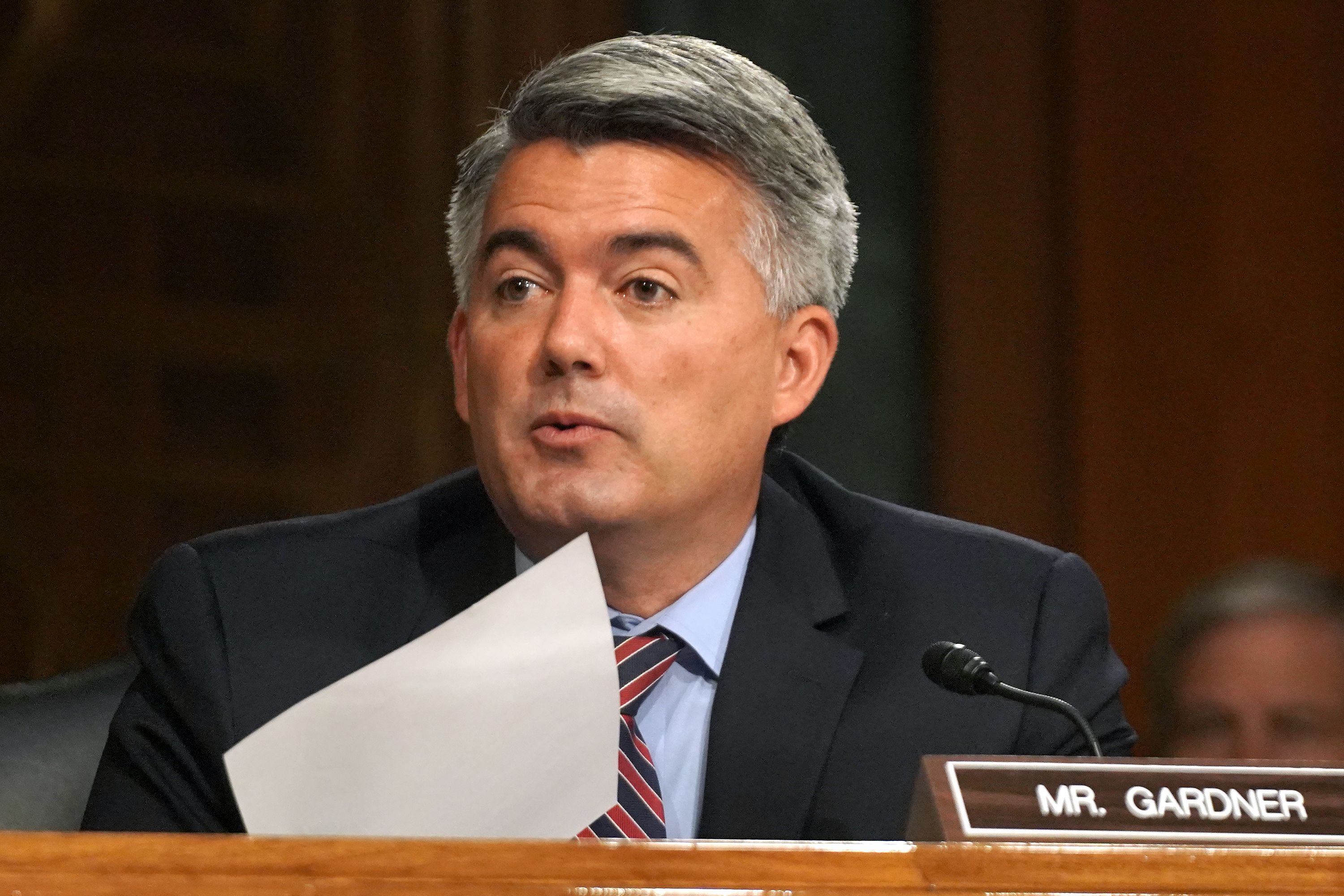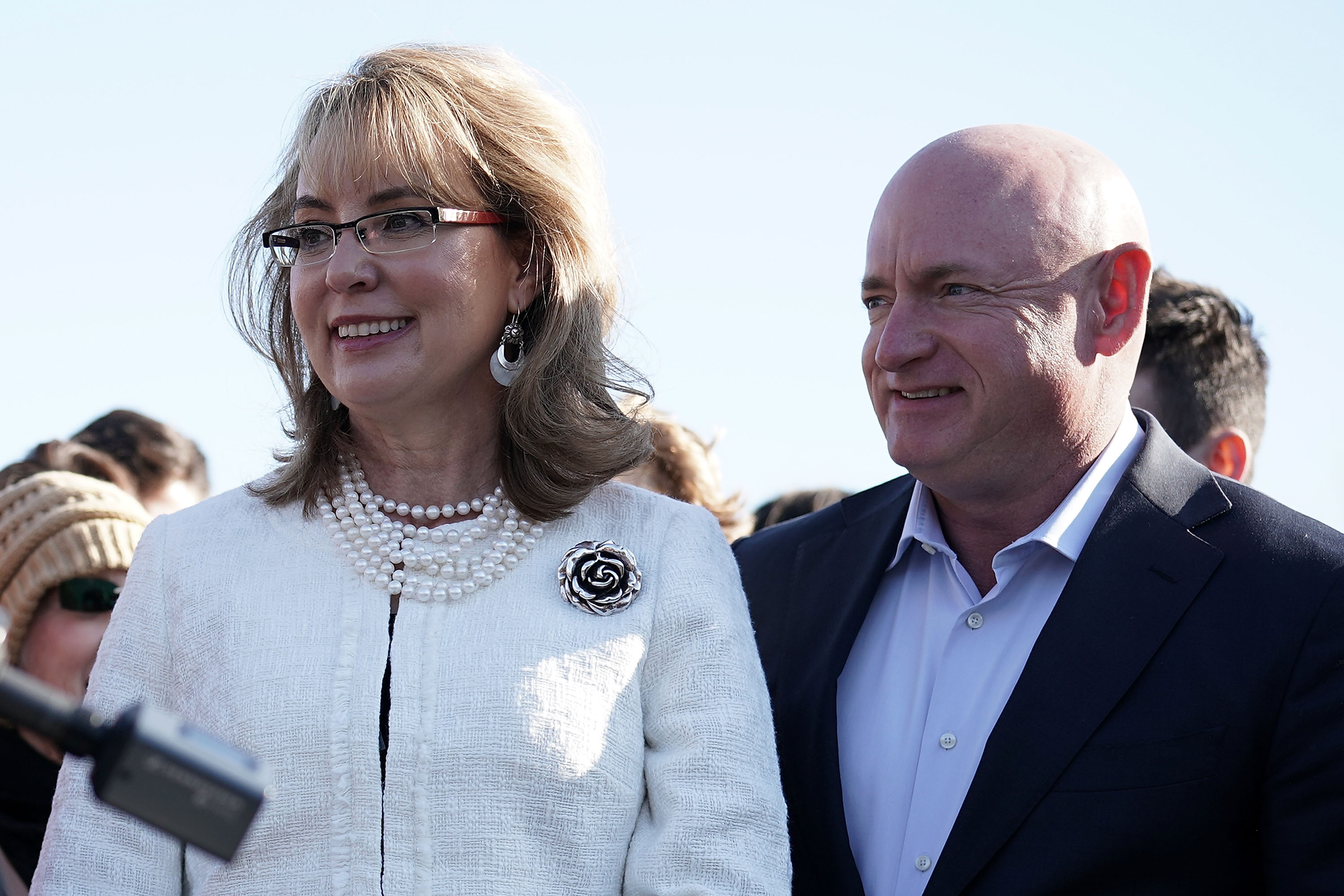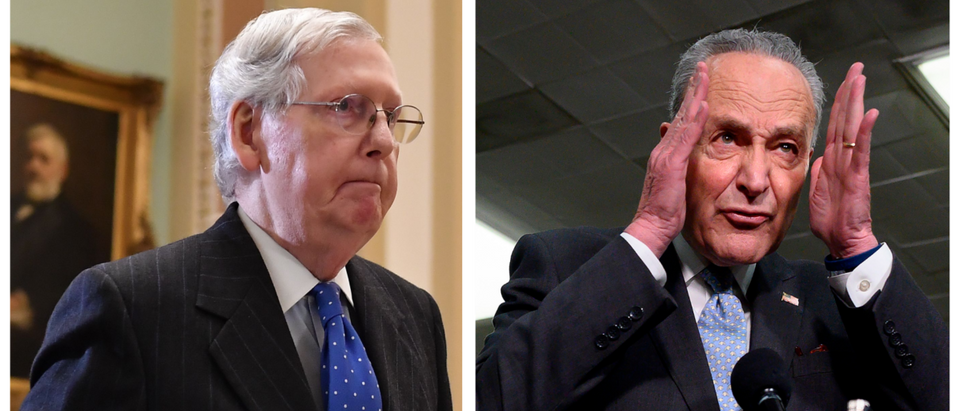- Senate elections have become much more competitive in recent months, as Democrats have recruited popular candidates in states where President Donald Trump’s popularity has suffered.
- Suburban voters in competitive states will likely decide which party has the majority come November, according to election analysts.
- Voting trends, fundraising and polls paint a picture as to what a blue wave in 2020 could look like.
Four GOP senators are facing tight elections against strong opponents. If just three lose, it would cost Republicans the majority in the Senate.
President Donald Trump’s suffering popularity as the coronavirus pandemic and nationwide unrest rage on is adding an additional challenge for these senators.
Democrats have recruited moderate, well-known and well-funded senatorial candidates to challenge several vulnerable Republican senators, according to Walter Olson, a senior fellow at the Cato Institute. The candidates resonate with suburban voters who helped flip the House of Representatives in 2018, giving Democrats a growing chance at taking the majority from Republicans in Congress’s upper chamber, he told the Daily Caller News Foundation.
These Democratic candidates’ ability to appeal to swing voters — in addition to the anti-Trump sentiment that many of them already feel — have made seats in Colorado, Arizona, Maine and North Carolina among the most competitive, according to the Cook Political Report. As a result, the Democrats have a chance of flipping the Senate from its current 53-45 makeup. (Vermont Sen. Bernie Sanders and Maine Sen. Angus King are independents, but caucus with Democrats.)
In addition to a Senate outlook that looks increasingly bleak for the GOP, as recent polls show, Democrats are effectively guaranteed to maintain control of the House of Representatives. Further, likely Democratic nominee Joe Biden has maintained a consistent lead against Trump in both national and swing-state polls. (RELATED: FiveThirtyEight Gives Biden 71% Chance At Victory)
Data published by the Brookings Institute shows how much suburbs have trended towards Democrats since 2016. The data show that suburbs across the country witnessed higher turnout in 2018 than in 2016 — despite midterms typically having lower turnouts — among black, Asian and young voters, which all historically favor liberal candidates.
“Turnout helped the Democrats greatly in 2018. Anti-Trump voters came out in numbers,” Olson told the DCNF. “This year, unlike then, Trump himself will be on the ballot.”
“Will his supporters show up in numbers?” he continued. “If not, that’s one more big problem for Republican Senate candidates.”
Further complicating these down-ballot races, according to election forecasters, is Trump himself, whose approval rating is around 40%. Surveys have shown that voters overwhelmingly disapprove of his handling of the coronavirus pandemic, and continuous protests over the death of George Floyd, have energized Democrats who were already eager to vote him out of office.
Republicans aren’t “home free even if Trump supporters do come out,” Olson said. “What if some check the presidential box and then skip the down-ticket races? What if they vote down-ticket based on something other than party allegiance?”
“Trump doesn’t behave like other candidates, and Trump voters may not behave like other voters either,” Olson told the DCNF. (RELATED: Susan Rice Says Trump Supporters In The Senate Belong In ‘Trash Heap Of History’)
Colorado
In Colorado, a Democratic-leaning state that Hillary Clinton won by five points in 2016, former Gov. John Hickenlooper won his primary to face incumbent Sen. Cory Gardner. Hickenlooper had consistent, strong support from suburban voters across the state in previous general elections, results show.

Sen. Cory Gardner (R-CO) asks a question to Secretary of State Mike Pompeo as he testifies before the Senate Foreign Relations committee in Washington, DC on 30 July 2020. (Photo by GREG NASH/POOL/AFP via Getty Images)
Gardner has slightly out-raised his opponent, bringing in nearly $17 million compared to Hickenlooper’s approximately $14 million, according to campaign finance reports.
But his fundraising has not translated to a boost in the polls.
Gardner has consistently trailed Hickenlooper by double-digit margins — the widest deficit for any Senate GOP incumbent — making him the most vulnerable incumbent senator in the country, Roll Call reported.
Additionally, Trump has trailed Biden in every Colorado poll. Gardner’s voting record has closely aligned with the president’s agenda, according to FiveThirtyEight.
Arizona
Sen. Martha McSally in Arizona is trailing Democrat Mark Kelly, who has vastly out-raised and outpolled his Republican rival, according to finance reports from both campaigns and recent polls. Kelly, a former astronaut, is married to former Arizona Rep. Gabby Giffords, who launched a national gun-control campaign after she was shot during a campaign stop in 2011.

Former U.S. Rep. Gabrielle Giffords and her husband, retired Navy combat veteran and NASA astronaut Mark Kelly, participate in a news conference. (Alex Wong/Getty Images)
The 2018 midterm elections saw Democratic turnout increase in all but two counties in Arizona, giving Democrats an additional House seat and Sinema more total votes than 2016 Democratic nominee Hillary Clinton, final tallies show.
Polls also show Biden leading Trump and Kelly leading McSally by similar margins. Meanwhile, McSally votes in line with Trump 95% of the time, according to FiveThirtyEight.
The nonpartisan Cook Political Report moved the race from “toss up” to “lean Democrat” in July as well, emphasizing Kelly’s polling advantage, prolific fundraising and favorable political environment.
Maine
In Maine, Sen. Susan Collins, cruised to reelection in 2008 and 2014, winning by margins of 28% and 37%, respectively. But in 2016, Clinton defeated Trump in the state by about 3%.
And in the 2018 midterm elections, increased Democrat turnout among suburban voters around Bangor flipped Maine’s 2nd Congressional District and the governorship, electing Democrat Janet Mills, exit polls showed.
The percentage of Democratic votes in the state rose in every single county in 2018, according to the Brookings data, increasing the party’s overall turnout to levels just shy of 2016, but in a midterm year.
Collins has faced repeated criticism over her swing vote to confirm now-Justice Brett Kavanaugh, who faced sexual assault allegations during his nomination process to the Supreme Court in October 2018. One of the only pro-choice Republicans in Congress, both abortion advocates and sexual assault survivors viewed Collins’s vote as a betrayal.
Her vote drew criticism, alleging that she had put partisan politics above her own personal beliefs, which she had relied on throughout her career. Collins’s vote to confirm a judge who refused to commit to protecting Roe v. Wade drew outrage from moderate, pro-choice Mainers who had supported her, and put her challenger, state House Speaker Sara Gideon, into the national spotlight.
Since then, Gideon has out-raised Collins consistently, bringing in almost $6 million more than the incumbent in the second quarter of 2020. Gideon has polled ahead of Collins as well, beating her in every poll commissioned in 2020 except for one, according to FiveThirtyEight. (RELATED: Crowdfunding Site For Susan Collins Challenger Got So Much Traffic It Crashed)
North Carolina
In North Carolina, Cal Cunningham clinched the Democratic senatorial nomination after Charlotte’s fast-growing, diverse suburbs aligned behind him, primary results showed. Cunningham faces Sen. Thom Tillis in a state where Trump captured 49% of the vote in 2016.
Voters elected Roy Cooper, a Democrat, as governor that same year. His approval rating is in the high 50s amid the coronavirus pandemic and is favored to win reelection, according to the Cook Political Report.
Numerous political fiascos have also plagued North Carolina.
In 2018, Republican Mark Harris withdrew his candidacy f0r the House of Representatives after a member of his campaign pleaded guilty to illegally casting absentee ballots for voters.
Last year, the North Carolina Supreme Court threw out the state’s congressional map after deciding that the map was gerrymandered in Republicans’ favor.
And in June, the president and the Republican National Committee withdrew their party’s convention after Cooper refused to relax stringent public health guidelines due to the coronavirus pandemic.
Tillis trails in polls against Cunningham by 5.4 points, according to RealClearPolitics average. Trump is dead even with Biden in the state.
Cunningham has also consistently out-raised Tillis. Though PACs supporting Tillis have raised just over $42 million, PACs supporting Cunningham have raised nearly $48 million.
Other States Are Also In Play
Further endangering Republicans’ majority are solid Democrat candidates that have made races in traditionally conservative states competitive.
In Iowa, Sen. Joni Ernst faces Theresa Greenfield, a former Iowa businesswoman. Greenfield has said Ernst, a Republican, failed to represent farmers in the state and accused her of favoring corporate interests over working Iowa families.
Her attacks against Ernst have been effective in the Republican-leaning state, where increased Democratic turnout in 2018 flipped two congressional districts blue, results reported from The New York Times show. Even as Trump holds a small lead over Biden in the state, Ernst has flip-flopped with Greenfield in recent polls.
In Montana, Republican Sen. Steve Daines is running against Democratic Gov. Steve Bullock in a tight race. Bullock, who won reelection in 2016, despite Trump winning the state by 20 points, has a 52% approval rating compared to Daines’ 47%, according to Morning Consult polls.
Though Bullock received 50.2% of the vote, he was not far behind Trump, who received 55%, results showed.
In 2018, all but three counties in Montana saw increased Democratic turnout, according to Brookings. GOP turnout fell by approximately 16%, according to exit polls from 2016 and 2018.
Meanwhile, Senate Republicans have looked to Alabama and Michigan to help hold their majority. In Alabama, incumbent Democrat Sen. Doug Jones is viewed as an underdog against former Auburn football coach Tommy Tuberville, the GOP nominee.
Despite Jones’s widely-praised record, including the successful prosecution of the KKK members who bombed a Birmingham church in 1963, he barely beat disgraced candidate Roy Moore in 2017’s special election.
If Jones loses, Democrats will need to win four seats instead of three to flip the Senate.
In Michigan, Republican candidate John James is running against Democrat Sen. Gary Peters. James, a retired military pilot and self-made businessman, came within seven points against Sen. Debbie Stabenow two years ago.
James has consistently out-raised Peters in the 2020 cycle. But as Trump’s approval rating has slipped in the Great Lakes State, James’s has as well.
Even if James continues to out-raise Peters, he will have to win without much outside help, as the National Republican Senatorial Committee has prioritized reelecting vulnerable incumbents instead of expanding their caucus, Politico reported.
Ratings Change: #MTSEN moves from Lean R to Toss Up. Read @JessicaTaylor‘s analysis: https://t.co/1Ja1TeXYYg
— CookPoliticalReport (@CookPolitical) June 18, 2020
Additionally, Republican Senate Majority Leader Mitch McConnell has encouraged vulnerable Republicans to distance themselves from the president if it will benefit their own races, CNN reported on July 31.
Holding the Senate is a “knife fight in an alley already, and we very much understand the Senate could go either way,” McConnell told Martha McCallum in July.
Doing so, however, forces Republicans to walk across a political tightrope.
“These vulnerable senators can’t afford to explicitly repudiate Trump,” said a senior Republican on Capitol Hill, speaking anonymously to CNN. “They just need to show they are independent on issues important to their states.”
All content created by the Daily Caller News Foundation, an independent and nonpartisan newswire service, is available without charge to any legitimate news publisher that can provide a large audience. All republished articles must include our logo, our reporter’s byline and their DCNF affiliation. For any questions about our guidelines or partnering with us, please contact licensing@dailycallernewsfoundation.org.


